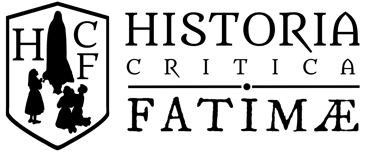Methodology
The working method of the Corpus Historicum Fatimae Criticum is based on the rigorous application of the classical historical-critical method, in continuity with the epistemological tradition defined by Ch. V. Langlois and Ch. Seignobos in their foundational work Introduction aux Études Historiques (1898).
Our work begins with the meticulous examination of primary sources—interrogations, correspondence, ecclesiastical documents, notarial records, contemporary press, and published archives—which are subjected to external and internal criticism to determine their authenticity, reliability, and context of production, and especially to evaluate the intentionality and sincerity of both the authors of the documents and the protagonists of the events. In the case of the Apparitions of Fátima, this process is essential due to the high number of testimonies that require critical analysis, rigorous classification, and systematic collation.
This process is complemented by an exhaustive bibliographic systematization: all relevant data are methodically recorded using archival cards, allowing for the rigorous organization, classification, and comparison of information.
The comparative analysis of these sources makes possible the reconstruction of historical scenarios as close as possible to their historical reality, accurately assessing the different levels of certainty to thus offer a truthful factual narrative of what happened in Fátima according to the testimonies.
The difference with official or devotional narratives about Fátima—or with other important approaches such as the works of Dr. P. Joaquín María Alonso or Dr. Sebastião Martins dos Reis—lies in the fact that Dr. Álvaro Albornoz Castro’s Corpus Historicum Fatimae Criticum does not start from existing bibliographic assumptions compromised with apologetic narratives about Fátima of a secular, theological, or purely ecclesiastical nature.
Instead, it applies the same scholarly and methodological rigor characteristic of classical positive historical science* to the Catholic religious phenomenon known as the Apparitions of Fátima, aiming to provide a factual historical narrative.
In other words, although the contributions of priest-researchers such as Dr. Alonso or Dr. Martins dos Reis constitute works of inestimable value for the study of Fátima, it must not be overlooked that they are, first and foremost, theologians whose worthy specialization is subject to the approval or censorship of ecclesiastical authority.
A notable example in this regard is the submission of Dr. Alonso’s work to complete restructuring and censorship, by which it lost its original form.
In this sense, this is the first time that a historical project on Fátima has been developed by a professional historian, specialized precisely in the events of Fátima, and not by a theologian or priest—who, while their contributions are undeniably valuable, are not trained as historians.
Finally, the ultimate goal of our critical methodology is to offer the most truthful historical reconstruction of the events of Fátima and of the biographical evolution of its protagonists—in particular, Lúcia de Jesus Rosa dos Santos, Jacinta, and Francisco Marto.
Our historical reconstruction is thus based on the strict application of the positive historical method, always supported by a critical apparatus that allows the reader to distinguish between proven facts, reasonable interpretations, and open hypotheses.
Ultimately, the essence of the critical method we apply here consists in evaluating the sincerity of testimonies through the use of a synthesis of sources, comparisons, and critical analysis—this being the only path to a truly satisfactory historical result within the possibilities of historical science itself.
*The term ‘positive historical science or method’ is used here in its classical historiographical sense, referring to the rigorous verification of sources and factual reconstruction — not to philosophical positivism.
info@historiacritica.com
+ 40 784 812 387
Copyright © 2025. Historia Critica Fatimae - All rights reserved.


CONTACT
SHARE
FOLLOW
